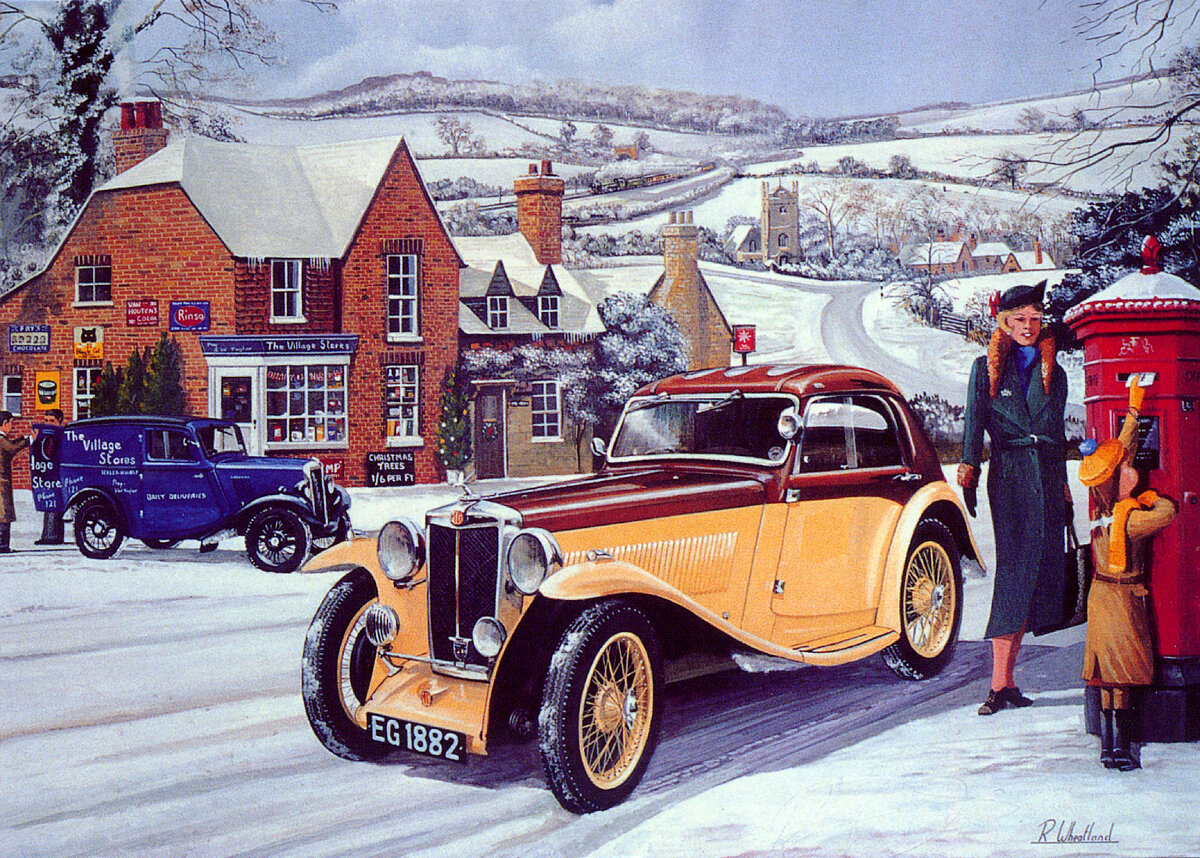1935 M.G. PA Airline Coupe








Specifications
Engine: 847cc Inline Four Cylinder
Horsepower: 36 @ 5500 RPM
Top Speed: 74 MPH
Weight: 1620 lbs.
Morris Garages was a retail sales and service center in Oxford, England owned by William Morris. M.G., which is assumed to have originated from the initials of Morris Garages, began as a subset of the company when their manager, Cecil Kimber began to modify standard Morris Oxfords and added M.G. Super Sports badges to signify his work. Not satisfied by just managing the Morris Garages business, Kimber began to design unique bodyworks, which were then fitted to standard Morris Motors chassis.
M.G. introduced their first model, the 14/28, in 1924. The recipe was a new, athletic body built on a Morris Oxford chassis, which evolved as the Morris did. It was not until 1928 that M.G. built their first all new M.G., the 18/80, a completely original car opposed to a modified Morris.
M.G. established themselves in the 1930’s with the T-Series Midgets, which were exported after World War II and found great success in international racing events. The successor to the Midget was the Model P, built in two series of PA and PB. The PA chassis served as the platform for the first Airline Coupes. The PA sold well for M.G.; the car was attractive, well built and successful in various motorsport events around the world. The PA was equipped with an evolved version of M.G.’s inline four, which was now equipped with a three-bearing crankshaft and a cross-flow cylinder head. The PA also was built with a strengthened transmission and larger brakes.
Just 51 Airline Coupes were produced, including this car on display. About half of the Airline Coupes were built atop the PA chassis, were powered by an 847cc inline-four-cylinder, while the PB utilized a 939cc six-cylinder engine. The Airline Coupe design was penned by independent designer Henry W. Allingham. Cecil Kimber saw an opportunity to market the Airline Coupe to prospective buyers who longed for M.G. performance, without the cloth top or side curtains.
The Airline Coupe body panels were hand formed from either aluminum or steel, built upon a seasoned ash frame. Allingham fitted the Airline coachwork seamlessly, naturally complimenting the size of the chassis without seeming awkward. Flowing fenders, a sloping rear deck with flush spare tires, and a sliding sunroof gave the car presence and noticeable character. Leather upholstery was offered inside the car, complimented by polished walnut trim and chrome framed sliding side windows.
While diminutive compared to the high-end British automobiles of the time, the Airline Coupe offers a tasteful glimpse at the extravagant side of 1930’s motoring, without being overbearing.
From the collection of Wayne Carini























